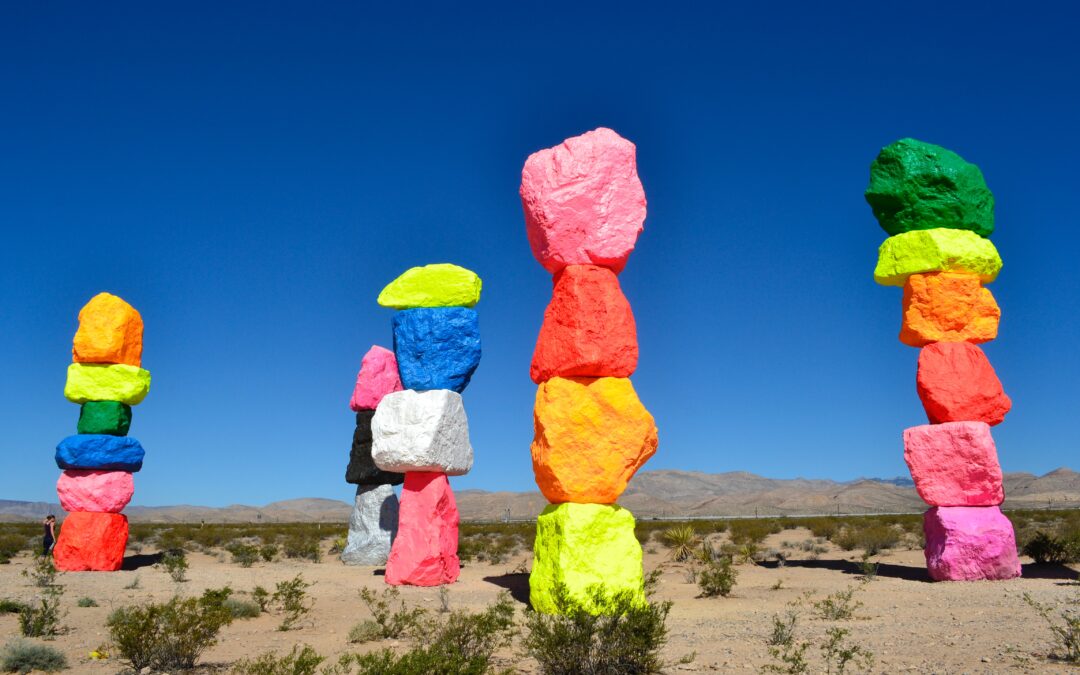
by adé PROJECT | Sep 21, 2023 | appreciation, art, chattanooga, community, entrepreneurship, equity, events + community gatherings, global south, southeast, storytelling, the people say...
Periscope Chattanooga: Artist Entrepreneur Training
CHATTANOOGA, Tenn. – ArtsBuild proudly announces the selection of the inaugural 2023 class of Periscope Chattanooga: Artist Entrepreneur Training, a business development intensive created by the Arts & Business Council of Greater Nashville that empowers working artists to see their creative practice through an entrepreneurial lens. This inaugural Chattanooga class consists of 22 artists working in an array of disciplines including visual art, fashion, music, jewelry, and more.
Artists are chosen for Periscope Chattanooga through a competitive application process and scored by a panel of community reviewers that includes leading artists, curators, musicians, and creative entrepreneurs in Chattanooga’s arts, culture, and business sectors. Selected artists participate in eight weeks of entrepreneurial training followed by six months of individualized mentorship by high-caliber business mentors. The program culminates at the Periscope Pitch + Artist Entrepreneur Showcase in May, during Small Business Week, where artist entrepreneurs unveil their creative businesses to the community.
“We are excited to welcome a group of diverse artists from a variety of disciplines who all demonstrate a high potential for business success in their creative endeavors to Chattanooga’s Periscope program,” said James McKissic, President of ArtsBuild. “We are empowering artists by treating them as the small business owners they are and by equipping them with the entrepreneurial skills to build successful businesses from their art.”
Participants in the 2023 Class of Periscope Chattanooga are:
- Aaron “Cherokee” Ellison (He/Him/His) – Dance
- Ashley Gazzola (Other) – Visual & Performance Art
- Claudia Alexander (She/They) – Visual Art
- Corey Twitty (He/Him/His) – Multidisciplinary
- Cortina Jenelle Caldwell (She/They) – Multidisciplinary
- Courtenay Cholovich (She/Her/Hers) – Drama/Public Art
- Courtney Cox (She/Her/Hers) – Fashion Textile
- Eric Kirkendoll (He/Him/His) – Music
- Jeron Devontė (He/Him/His) – Music
- Jessica Laliberte Bowman (She/Her/Hers) – Dance
- Katheryn Hande (She/Her/Hers) – Fashion/Textiles/Visual Art/Multidisciplinary
- Kevin Bate (He/Him/His) – Drama/Theatre Performance
- Kristina Sanchez (She/Her/Hers) – Visual Art/Multidisciplinary
- Laura Ter Beek (She/Her/Hers) – Visual Art
- Macayela Blackhorse (She/Her/Hers) – Visual Art
- Mary Ahern (She/Her/Hers) – Drama/Fashion/Literary Arts/Visual Art
- Matthew Dye (He/Him/His) – Visual Art
- Micah Chapman (He/Him/His) – Music/Literary Art
- Sarah Mixon (They) – Drama/Theatre/Performance Art/Music /Playwriting
- Shasta Mignon (She/Her/Hers) – Fashion/Textile/Film/Literary Arts
- Tanqueray Harper (She/They) – Drama/Theater/Performance Art/Photography
- TJ Hanretta (She/Her/Hers) – Multidisciplinary
Periscope: Artist Entrepreneur Training is a program of the Arts & Business Council of Greater Nashville created in partnership with the Nashville Entrepreneur Center, Metro Arts: Nashville’s Office of Arts + Culture, the Nashville Area Chamber of Commerce, and the Mayor’s Office of Economic & Community Development.
Periscope Chattanooga is supported by ArtsBuild donors, The Nancy Lackey Community Education Fund, The Sankofa for Civic Engagement Organization, United Way, City of Chattanooga Office of Arts, Culture, and Creative Economy, Benwood Foundation, and Tennessee Valley Federal Credit Union. Those interested in volunteering as a mentor or coach with Periscope should contact Monica Kinsey at monica@caravantribe.com.
###
About ArtsBuild
Located in Chattanooga, Tennessee, ArtsBuild’s mission is to build a stronger community through the arts. Founded in 1969, ArtsBuild has supported the creative future of Hamilton County by investing more than $78 million over the past 54 years in our community’s many arts organizations, funding arts integration programs for our students and teachers, and ensuring that even our most underserved populations have access to arts programming. ArtsBuild is a 501(c)(3) nonprofit organization, and all gifts are tax-deductible as allowed by law.
About the Arts & Business Council of Greater Nashville
The Arts & Business Council of Greater Nashville leverages and unites the unique resources of the arts and business communities to create a thriving, sustainable creative culture in Nashville. We accomplish this through six main programs: Education for the Creative Community, Volunteer Lawyers & Professionals for the Arts, Periscope: Artist Entrepreneur Training, Arts Board Matching, Fiscal Sponsorship, and Creative Advantage, among many other resources and opportunities.
For more information, visit https://artsbuild.com/programs or contact monica@caravantribe.com.
Photo by Natosha Benning on Unsplash
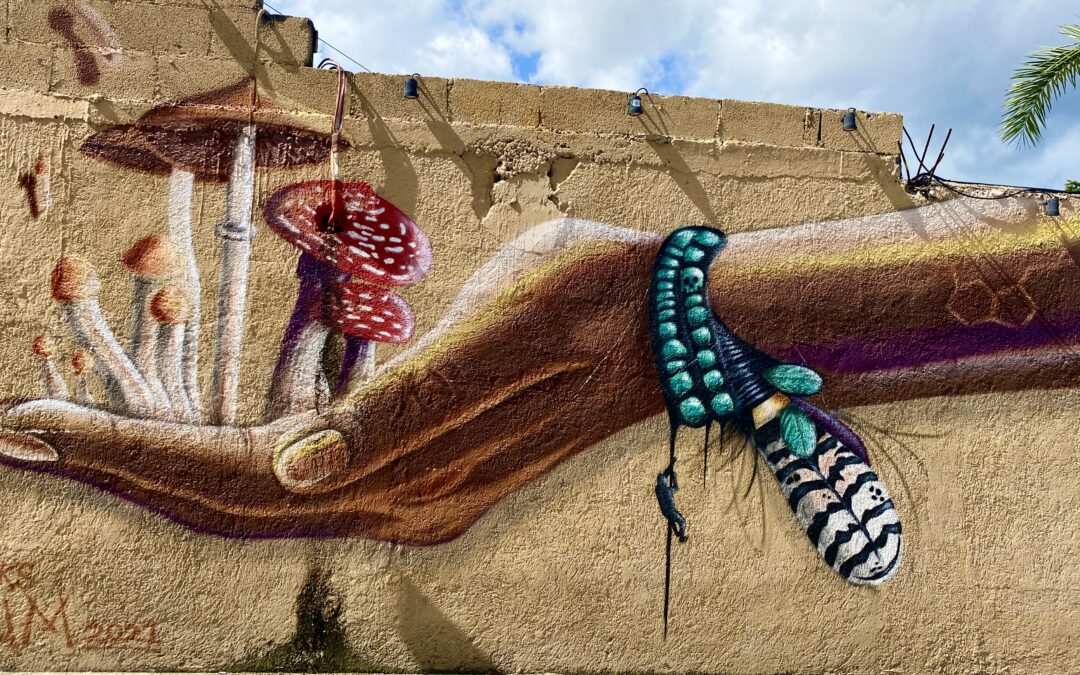
by adé PROJECT | Jun 21, 2023 | art, care, community, education, equity, heritage, resilience, solidarity, storytelling, sustainability, travel
Public spaces have always been mirrors reflecting our collective journey.
From the magnificent murals of Diego Rivera in San Francisco, capturing the essence of the working class and their struggles, to the “Cloud Gate” in Chicago (often referred to as ‘The Bean’), art installations and expressions in public spaces encapsulate epochs, emotions, and evolutions. They become historical bookmarks, telling tales of bygone days and contemporary musings.
Creative placemaking is an evolving field where community stakeholders collaborate to shape public spaces through arts and cultural activities. At its core, it’s about leveraging the power of arts, culture, and creativity to serve a community’s interest while driving a broader agenda for change, growth, and transformation. Through this practice, mundane spaces can bloom into vibrant hubs, fostering community engagement and revitalizing local identities. I personally like to refer to this practice as creative placekeeping as opposed to placemaking because to me, placemaking indicates that there was no place there prior to someone spotlighted. When in truth, these neighborhoods, communities, buildings and outdoor spaces have a very alive story if we care to dig a little deeper and be curious. In essence, creative placekeeping indicates that whatever new emerges should honor and acknowledge what was before.
Public art is art in any medium that has been planned and executed with the intention of being staged in the physical public domain, usually outside and accessible to all. It spans a vast spectrum—from murals, sculptures, and installations to performance arts like flash mobs and street plays. It’s an artist’s way of dialoguing with the community, sharing perspectives, highlighting issues, and evoking introspection. Art doesn’t exist in a vacuum; it weaves seamlessly into the fabric of urban planning. In the realm of creative placemaking, art becomes the heart, and urban design, the veins that spread its influence. Chicago, for instance, has consistently prioritized public arts, with its skyline punctuated by notable installations. Philadelphia’s Mural Arts Program has transformed urban spaces while narrating the city’s diverse cultural tales. Then there’s Seattle, where public art initiatives intermingle with natural beauty, creating harmonious urban-nature landscapes. Through strategic design and artistic flair, these cities have underscored the indomitable spirit of their communities. Of course, for me this hits close to home with all of the work I’ve done in the Southeast.
Preservation for Tomorrow: Drawing from the opening sentiment, public arts and creative placemaking aren’t just ornamental facets of urban planning; they’re integral to preserving our shared history. By intertwining artistic expressions with urban spaces, we’re crafting archives, not just for today’s urban dwellers but for future generations. These art-infused spaces will serve as testament to our times, much like the murals and installations of yesteryears that capture epochs gone by.
In conclusion, as we look to the structures and spaces around us, let’s see them not just as brick and mortar but as living chronicles of our journey, shaped and colored by the indelible strokes of art and culture.
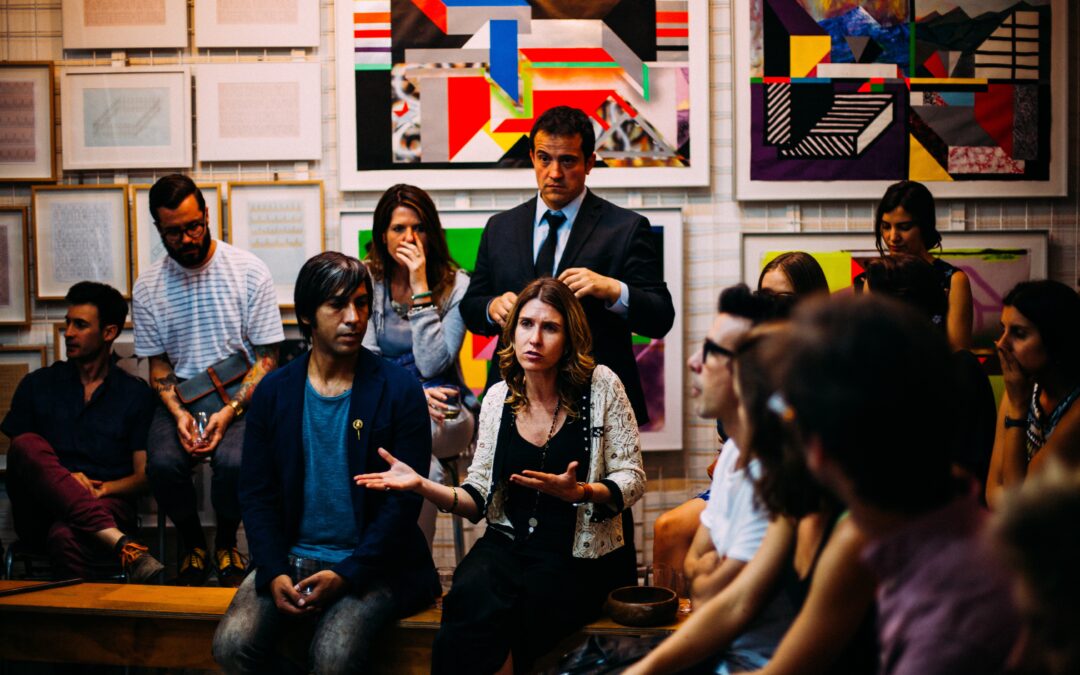
by adé PROJECT | May 5, 2023 | care, communication, community, creative facilitation, curiosity, education, equity, learning, resilience, responding to crisis, schools, service, storytelling, training and education
Popular education, a transformative approach to teaching and learning, empowers communities to address societal inequities. Rooted in the Latin American social justice movements of the 1960s and championed by the likes of Paulo Freire, its main emphasis is on facilitating dialogues that lead to action. This article will delve deep into the essence of popular education, trace its historic lineage, discuss its practical applications, and highlight the profound impact it has on society.
The Essence of Popular Education: Education stands as a cornerstone of civilizations, sculpting thoughts, ideologies, and actions. Over centuries, traditional education primarily served as a means to impart knowledge. However, popular education brings a paradigm shift:
- Democratic Dialogue: Encourages open discussions rather than a one-way flow of information.
- Critical Thinking: Students are taught to question the status quo.
- Problem-Posing: Real-life issues form the core of the curriculum.
- Action-Oriented: Learning is tied to social actions and change.
- Holistic Learning: Incorporates emotional, social, and intellectual aspects.
- Community-Centered: The learning process is deeply rooted in community issues.
- Peer Teaching: Everyone is both a teacher and a learner.
- Cultural Relevance: Curriculum is tailored to the community’s cultural context.
- Empowerment: Emphasizes personal and collective power.
- Reflection: Continuous introspection and assessment of one’s learning and actions.
What does this look like? Where did this even come from? Let’s go on a journey.
Close your eyes and imagine a vibrant community square in 1960s Brazil. Sounds of laughter, debates, and the strumming of guitars fill the air. Paulo Freire is seated amidst a group, holding a dialogue about land rights, poverty, and literacy. He believes in the power of the community to bring change. This isn’t a typical class; it’s a movement. As the sun sets, the seeds of popular education take root, sprouting branches that will spread across continents, fostering growth and transformation.
Now let’s identify some practical applications of popular education.
Beyond theory, popular education thrives in real-world applications. Community health workers in marginalized neighborhoods utilize it to spread awareness about preventive care. Grassroots activists use its tenets to rally communities around pressing issues, from environmental degradation to civil rights. In urban settings, it informs workshops that address systemic inequalities, empowering participants to collectively devise strategies and actions. Simply put, it is a dynamic tool that adapts to diverse contexts, always aiming for a more equitable world.
I often talk about forming a “just” society and I have seen first hand in my own work how popular education offers myriad benefits. As the reshaping the landscape of community engagement continues to be centered on fostering societal change, I believe that this is a tool with many applications based on what a community needs.
Some of its paramount contributions include:
- Empowerment: Equipping individuals with the tools to challenge and alter oppressive systems.
- Community Solidarity: Strengthening ties and fostering a collective spirit.
- Informed Action: Basing community actions on thorough dialogue and critical analysis.
- Cultural Preservation: Valuing and integrating indigenous wisdom and local knowledge.
- Lifelong Learning: Encouraging continuous growth and adaptation in the face of changing societal dynamics.
In wrapping up, popular education is not just an academic theory; it’s a beacon for a just society. Whether we’re educators, activists, or everyday citizens, embracing its principles paves the way for a world where knowledge is the catalyst for tangible, positive change. To evolving!
Photo by Antenna on Unsplash
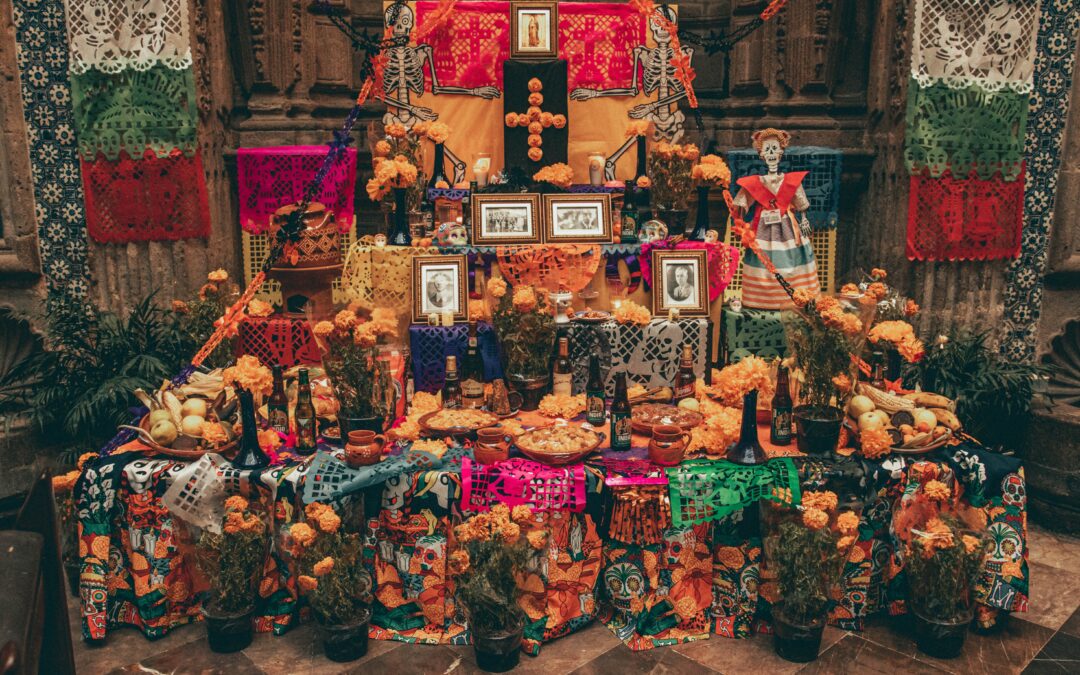
by adé PROJECT | Nov 1, 2022 | Uncategorized
What’s up with all the sugar skulls around or after Halloween? The abundant appearance of sugar skulls around Halloween season is not just a matter of dress-up or costuming, it is one aspect of an ancient cultural tradition.
Día de los Muertos, known as Day of the Dead in English, is a rich and colorful celebration rooted in the ancient Mesoamerican cultures of the Aztec, Maya, and Toltec. Unlike the eerie undertones of Halloween, which it precedes, Día de los Muertos is a vibrant expression of remembrance and respect for loved ones who have passed on. Spanning two days, November 1st and 2nd, the celebration is split to honor the souls of children on the first day and adults on the second.
Altars or “ofrendas” become centerpieces in homes, adorned with photos, favorite foods, mementos, and bright orange marigold flowers (or “cempasúchil”). These flowers, with their sun-like radiance, are believed to guide the spirits back to the world of the living. Meanwhile, the aromatic and delicious “pan de muerto” (bread of the dead) is baked specially for this occasion, often featuring bone-shaped adornments.
Further enriching the aesthetic of this celebration is “papel picado,” delicate paper banners punctuated with intricate designs, swaying gently in the air. On the streets, you might spot beautiful skeletal figures, most notably “La Catrina” – a symbol of the holiday – elegantly dressed and parading around. The iconic sugar skulls, or “calaveras,” decorated in a riot of colors and patterns, serve as a reminder of the cyclic nature of life.
But Día de los Muertos is not all about vibrant displays. It’s also a deeply personal time. Many families light candles and visit the graves of their departed loved ones, sometimes spending the entire night in heartfelt remembrance. Such profound cultural significance led UNESCO, in 2008, to honor Día de los Muertos by adding it to its list of Intangible Cultural Heritage of Humanity.
As you delve deeper into the traditions of Día de los Muertos, it becomes evident that it’s more than just a holiday; it’s a poignant celebration of life and death, reminding us of the eternal bond we share with those who came before us. One way to deepen the understanding or practice of Dia de Los Muertos might look like having a family night of making sugar skills. Keep reading below for a supply list and instructions for facilitating it!
Sugar Skull Masks for Día de los Muertos:
Materials:
- Paper plates
- White, black, and colorful paints & brushes
- Glue
- Colorful craft papers or sequins
- Markers or crayons
- Hole punch
- String or elastic
Instructions:
- Base Design: Start with the paper plate as your base. Paint the entire plate white for the skull’s foundation. Allow it to dry.
- Features: Using paint, markers, or crayons, draw and color the eyes, nose, and mouth. Traditionally, the eyes are often flower-shaped or circled, and the nose is often an upside-down heart or spade shape.
- Decorative Elements: Día de los Muertos sugar skulls are known for their vibrant decorations. Use colorful craft papers to cut shapes like flowers, hearts, or swirls. Alternatively, sequins can be glued on for added sparkle.
- Final Touches: Add intricate details with paint or markers, like dots, lines, or other patterns to enhance the skull’s design.
- Hole Punch: Once your design has dried, punch a hole on each side of the plate.
- Add String: Thread a string or elastic through the holes, tying knots to keep them in place. Adjust the length to fit comfortably around the head.
Photo by Roger Ce on Unsplash
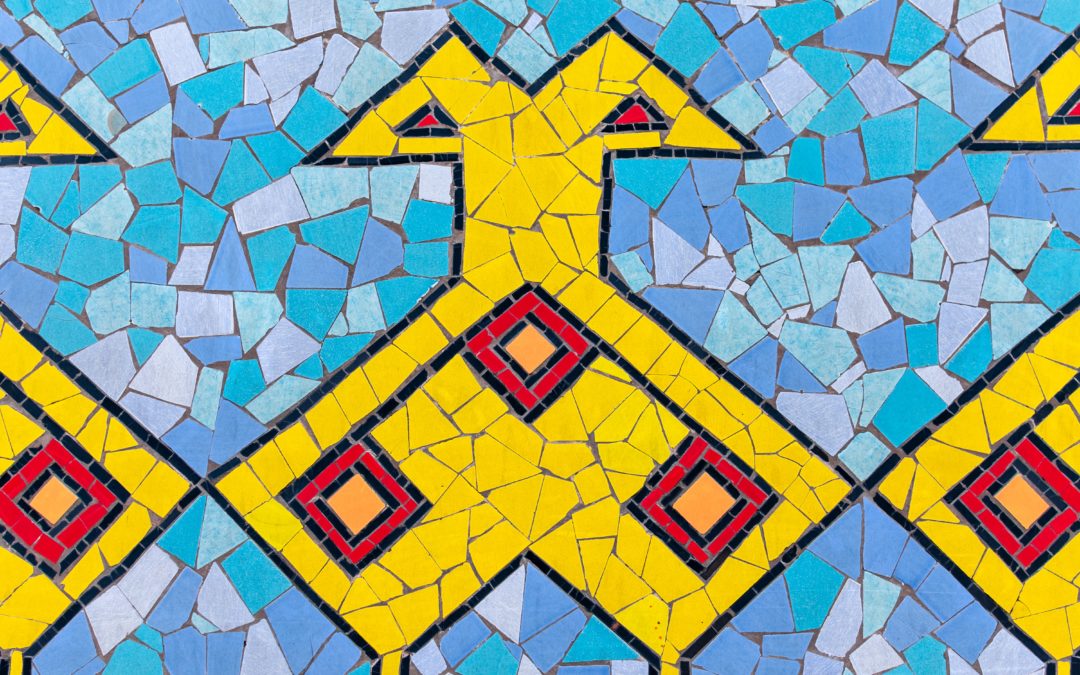
by adé PROJECT | Apr 13, 2020 | accountability, art, care, community, COVID-19, resilience, responding to crisis, solidarity
The response to this crisis can easily slip into two opposing narratives. The first narrative is of a deep othering, and the second, of belonging. I am concerned about the language around the calls for social distancing and/or social isolation. There is certainly a public health need for physical distance. But this is not the same as social isolation. What is needed is social solidarity along with spatial separation. There have been more than a few stories stating that isolation comes with a different set of costs.
The current situation also underlines the interconnectedness between all of us and our planet. It reveals, as we have been trying to show for many years, that when one person suffers, we all experience the effects of that suffering. We do belong to each other and to the earth. Now more than ever we see how it is in everyone’s best interest, including those who are more privileged, to ensure the well-being of all. Our collective health is only as strong as the weakest and most vulnerable members of society.
Our lives and routines have been disrupted, and for how long this will continue, we don’t know. This is likely to come with considerable stress and anxiety, even if we do not get sick. What we do know is that it is important to have habits and routines that are healthy and help us connect to each other. There are things we can do alone like walking or meditation, but we also need contact with others and to engage in activities to take our minds off the constant dread.
In short, we need each other.
john a. powell
Director, Othering & Belonging Institute
Professor of Law, African American, and Ethnic Studies at UC Berkeley
For full digital magazine, Crown Chronicle, visit – https://mailchi.mp/c3e402408711/online-creative-sessions-funds-grants-and-other-community-resources






